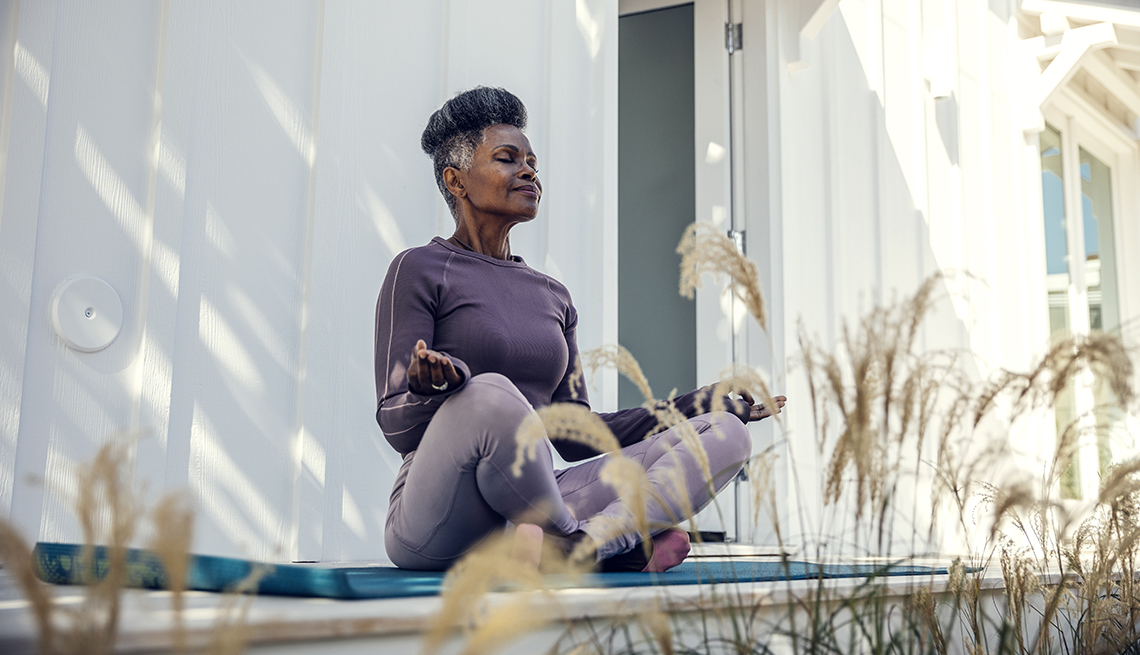
- Select a language for the TTS:
- UK English Female
- UK English Male
- US English Female
- US English Male
- Australian Female
- Australian Male
- Language selected: (auto detect) - EN
Play all audios:
10. SHINE A LIGHT ON IT Building codes require that staircases have switches at the top and bottom. However, we don’t always use those lights when our hands are full or we don’t want to
disturb sleepers in the bedrooms nearby. Motion-activated switches that turn lights on and off automatically are a helpful option. IN THE BATHROOM 11. BLOCK THE BARS Wooden
"blocking" installed before a wall is finished provides a secure location for installing grab bars and other wall fixtures, such as towel bars and hooks. Photo courtesy Vince
Butler When a grab bar isn't securely mounted, it's more likely to become loose and fall off the wall. The best way to prevent this is before the walls are finished by installing
horizontal wood "blocking" at the proper height for grab bars in the tub, shower and toilet areas. Installing such blocking is inexpensive and easy to do during construction but
can be very costly and disruptive later. Tip: Before the drywall is installed, run a measuring tape from the floor up to the framing and take a picture to document exactly where the blocking
has been placed. There are ways to install grab bars without blocking but nothing is more solid and secure than fastening directly to the wood framing. 12. OPEN AND CLOSE THE DOOR Doors are
the number one obstacle to having a usable bathroom when someone requires assistance or is using a mobility aid. Sometimes an out-swing door works better for a bathroom than an in-swinging
one. In other scenarios, a pocket door may be the better solution. 13. CUT-OUT THE CURB A shower is generally more usable and safer than a bathtub. Eliminate the typical step-over shower
curb for a zero-step solution. If desired, the space can accommodate a frameless glass shower enclosure or, if needed, be converted into a fully-accessible shower for either a seated
transfer or roll-in use. 14. GRAB THE GRAB BARS NOW If the walls are blocked already, install the grab bars. People of all ages can benefit from having something to grab onto near the shower
or tub. (I found the grab bars in my bathroom to be quite helpful while I was recovering from shoulder surgery.) KITCHEN DUTY 15. LOW, MEDIUM AND HIGH Various height kitchen countertops
provide options for use by a child, a tall person and someone who prefers to sit rather than stand while preparing a meal. 16. PUT IT AWAY Provide storage options in locations that don’t
require lifting, and include pull-out drawers and trays and other accessories to increase usability. 17. PICK AGING-FRIENDLY APPLIANCES Consider the design of stoves, dishwashers and
refrigerators to minimize or eliminate hazards such as reaching over a hot burner to adjust the controls. Evaluate the design for usability by people with varying abilities and locate the
appliances to minimize lifting or bending. For instance, placing a microwave oven above the range is an example of _not_ planning for the future. 18. TWO SINKS ARE BETTER THAN ONE Consider
installing a second sink with a pullout spray faucet near the cooking area. Doing so is handy for filling a pot with water for boiling — and then emptying that pot without having to carry it
across the kitchen. THE BIG PICTURE 19. EASY IN, EASY OUT A large, "curbless," walk-in shower is useful for residents of all ages (and muddy dogs, too). Photo courtesy Vince
Butler There should be at least one way to get into the home without having to use steps. Installing a zero-step entry into the house (and into a shower, as noted above and shown at right)
solves two of the most challenging obstacles to creating an age-friendly home. If plans include adding a garage or new living space, consider options that will create an entry that can be
used by someone using a wheelchair, pushing a baby stroller or dragging wheeled luggage. 20. STACK THE CLOSETS If a home has multiple levels, locating the closets in the same location on
each floor creates space for a future elevator shaft. It might sound extravagant, but more and more houses are including this feature and the cost is minimized when the space is already
available. Also, installing an elevator is often an affordable option compared to the cost of selling a home and relocating. If an elevator isn't needed, the house has two very useful
closets. 21. ONE-LEVEL LIVING In an ideal world, all multistory homes would contain a full bath on the first or entry floor as well as a bedroom or room that could be converted into a
bedroom. When building a new residence or renovating one, the existence of these two rooms are key to a home being aging friendly. Every feature I've described is easier and less
expensive to include during a renovation or new construction project than years after the crew has finished the job and gone. Including these features in my home office would have helped a
lot once the space became my mom's apartment. For instance, I did need to install a chairlift with a dedicated electrical outlet. I unfortunately built a standard staircase, so the
tight clearance around the chair is a constant challenge. However, most home renovation work happening today is driven entirely by the homeowner's current needs and wishes rather than
possibilities for the future. Including aging-friendly features in a home when they're optional provides the freedom to make choices rather than having decisions made in urgency or by
others. Look at your home and the spaces in it. A den may become a first floor bedroom, permanently or during a convalescence. A playroom might evolve into an exercise room. You probably
won’t anticipate all the future uses of your home, but the benefits of these improvements will be useful today and for many years. _Vince Butler is the owner of Butler Brothers, a
residential construction and remodeling firm based in Northen Virginia. He is a Certified Aging-in-Place Specialist (as well as a CAPS instructor), Graduate Master Builder (GMB) and Graduate
Master Remodeler (GBR)._ HOME SWEET HOME More "Aging Friendly" housing resources: _Page published February 2016__ _ More from AARP.org/Livable Use the dropdown to choose a
livability topic. Select a Subject More from AARP.org/Livable Use the dropdown to choose a livability topic. Select a Subject








